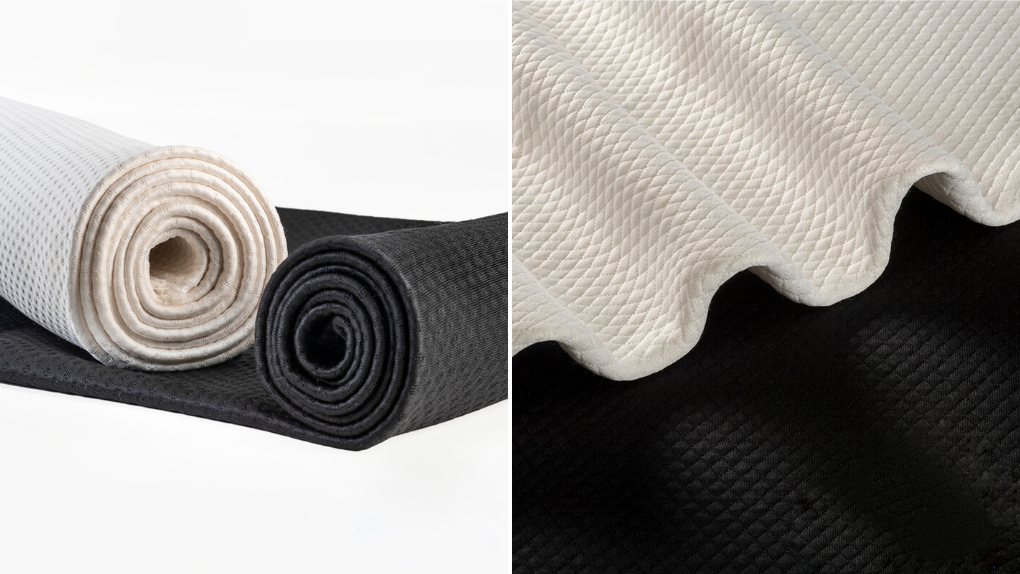Our Fabric Story, P2: Passing the P-Test
Images by Zorb Fabrics
Before launching Prickly Pear, I searched high and low for an incontinence product that would allow me to run without fear of leakage. The product had to conceal leaks, be comfortable, and discreet. I tried lots of products—washable underwear, snap-in padding, leggings with cotton terry gussets, and a disposal option wonderfully named Justgogirl. Nothing held up except for Justgogirl, but I wanted something more environmentally sustainable. (Disposables and fabric both accumulate in landfills and some experts disagree about which is worse—more about this in a future blog.)
The market is fairly saturated with washable incontinence underwear, some of it perfectly okay for everyday wear, none of it adequate for athletic use—at least not for women like me who leak more than the 8 or fewer teaspoons (that’s 1.33333 ounces) many promise to absorb. So I decided to take a look at how the products currently on the market are constructed. Here’s what I learned: Incontinence underwear gussets are typically made of synthetic blends. Polyester is popular because it is hydrophobic, meaning it wicks moisture away from the skin and distributes it evenly as it absorbs rather than letting it pool. A layer of breathable moisture barrier keeps urine from leaking through onto clothes. What an improvement over disposable plastic liners, right?
Hold on! What about women who have been advised to wear only cotton underwear because of a history of frequent UTI or vaginal infections? Wouldn’t polyester compound the problem? It certainly can. While today’s synthetics mimic many of the desirable properties of natural fibers, they simply aren’t as breathable. Bacteria that cause yeast and other forms of vaginitis thrive in warm, moist environments – like that created by exercising in tight-fitting clothing. The last thing we want to do is solve one problem and create another.
I was beginning to understand why the industry hasn’t produced a super absorbent, thin, comfortable, breathable, moisture-wicking, leak-concealing incontinence product for active women. One fabric can’t possibly meet all those specs, right? The solution was there all along; it just took us a while to find.
We came upon it during the renaming phase of Prickly Pear Sports. After weeks of rejecting ideas as soon as we thought them up, my husband said, “Why don’t you name it SHEZORB”? “Uh, what?” I replied. I Googled it anyway just to see what would come up. What came up was Zorb fabrics, made by a company called Wazoodle. Wazoodle produces fabric for the washable diaper, incontinence and medical application markets. It is a family-owned company that provides a refreshing level of customer support. They helped us identify the right combinations of synthetic and natural fibers, explaining the benefits and tradeoffs of each one. We chose a mix of polyester and bamboo and ran it by our prototype testers. It passed the test.
Twelve prototype testers engaged in their favorite activities including running, cross fit, aerial aerobics, climbing and walking. By our third iteration (we’re serious about design modification based on feedback), ten were completely happy with the level of leak protection and none experienced a UTI or vaginitis. All liked the feel of bamboo next to sensitive skin.
So, while my husband didn’t get to name our company, he gets full credit finding our fabric supplier—and for his sense of humor. Next up: textiles, disposables, and sustainability.

